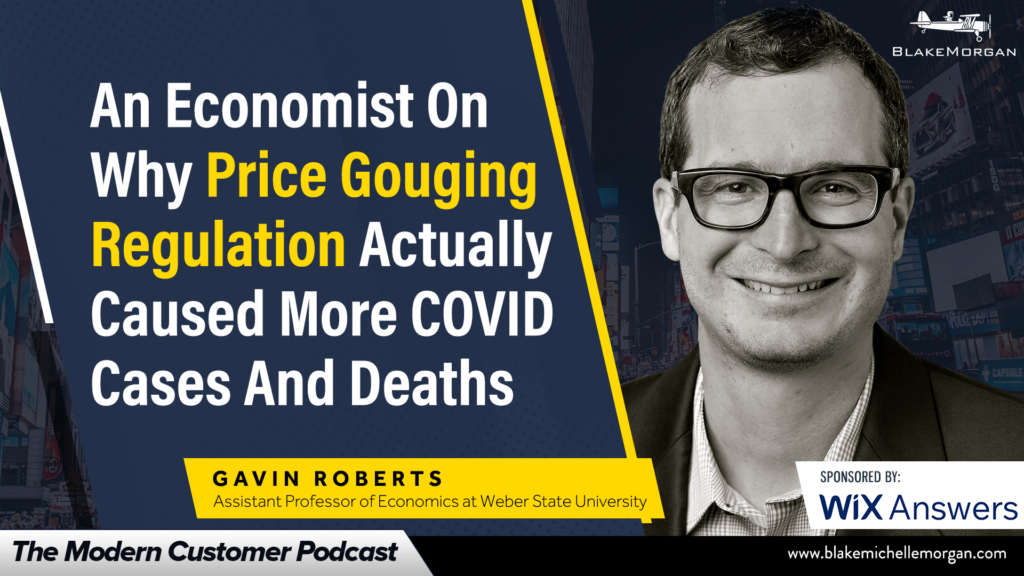At the height of the COVID pandemic in spring 2020, toilet paper and hand sanitizer were the hottest items on store shelves. The search for these essential items grew to a fever pitch, with customers lining up for hours and scouring the internet to get their hands on these hot commodities.
As demand skyrocketed and shelves cleared, many states and retailers put price gouging regulations into effect.
But those efforts to help consumers may have actually led to more COVID cases and deaths.
Gavin Roberts, assistant professor of economics at Weber State University, studied the impacts of price gouging regulation during the pandemic.
Typically, price gouging regulation is put in place by state governments during localized public emergencies. Roberts gave the example of a hurricane, which may only affect one or two states. In that case, the affected states may enact price gouging regulation, which says that retailers can’t increase the price for essential items, such as gas, toilet paper and hotel rooms, beyond a certain percentage of increase or what some states call an “exorbitant increase”.
But the COVID pandemic affected the entire world, leading to widespread price gouging regulations like we’ve never seen. Economists widely believe that price gouging regulations cause shortages, which was definitely the case during COVID. Price gouging regulation limits what companies want to sell. If companies can’t make much money, they aren’t as motivated to sell their products, which leads to a shortage of items. Roberts observed that customers increased their internet searches for items like toilet paper and hand sanitizer, which follows the pattern of price gouging regulation. When goods are in shortage, people search for them more.
But the widespread COVID pandemic took things one step further. When customers couldn’t find what they needed online, they searched in person. Price gouging led to a shortage of products and customers rushing to brick-and-mortar stores, right during the push for virus mitigation efforts and a need to stay at home. Roberts’ research shows the rush of customers to stores to buy toilet paper and hand sanitizer led to a wider spread of COVID cases and deaths.
Price gouging regulation is often put in place so that low-income individuals don’t get priced out of essential items. But Roberts believes price gouging regulation isn’t an effective measure in supporting low-income families. We need to take the next step to think about if the policy actually helps those in need. Going forward, he wants companies and governments to carefully consider if the policies and regulations they put in place actually help the people they are intended to or if they cause more harm than good.
The early days of the COVID pandemic were unlike anything we’ve ever seen, largely due to the lack of essential items like toilet paper. The pandemic has caused us to re-evaluate many practices and policies, including price gouging regulation.
_________________
*Sponsored by Wix Answers
It’s been a year of change for businesses. What’s making this period most challenging is the lack of clarity. But, that’s also where there’s an opportunity to stand out by building trust in your relationships with your customers with agile communication.
Wix Answers takes a new approach to customer support by helping you adapt quickly to know exactly what your customer needs and when they need it.
Go and see for yourself today at WixAnswers.com.
_________________
Blake Morgan is the bestselling author of The Customer of the Future. Sign up for her new course here.

